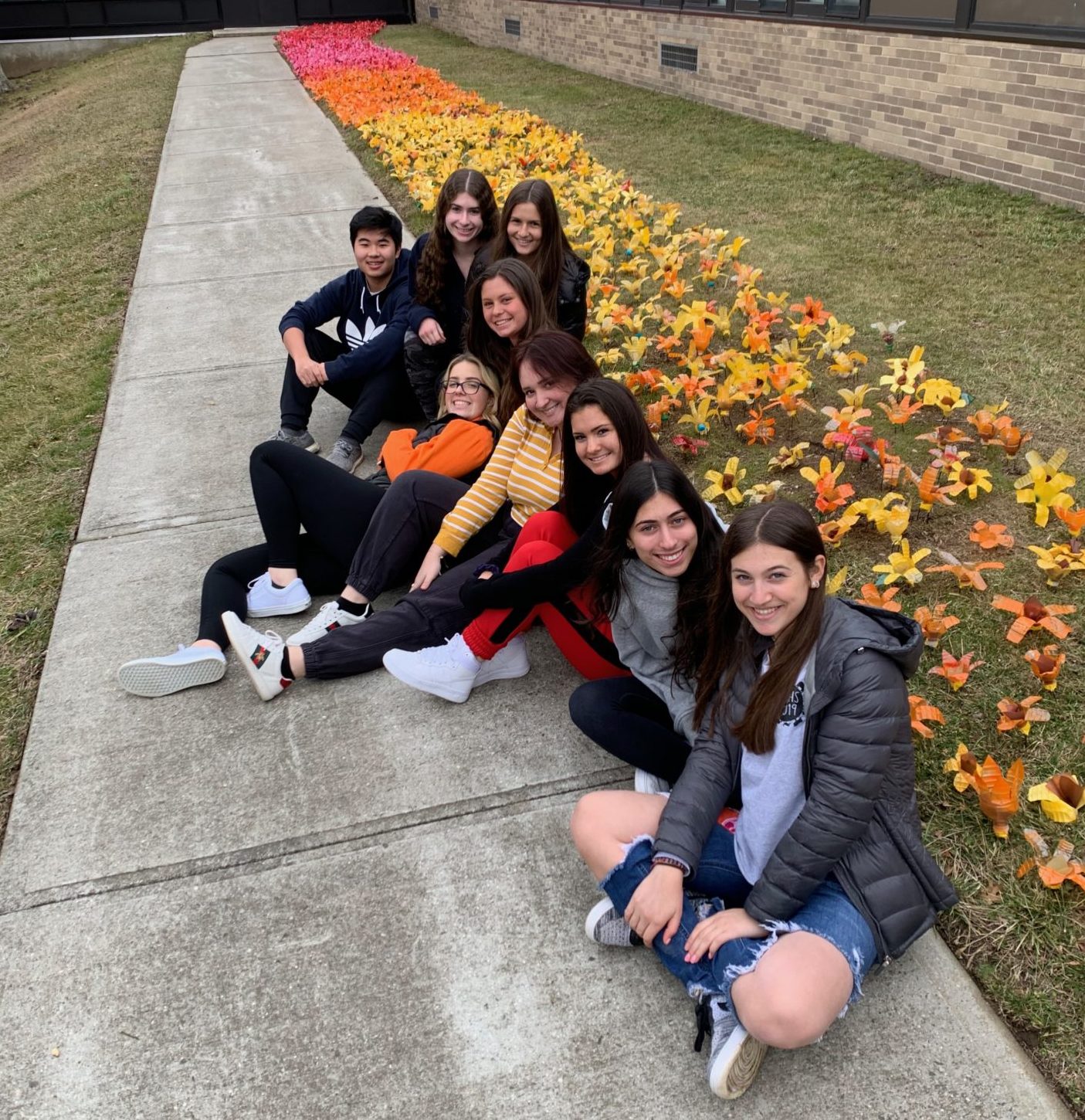
By: Leah Sycoff
Sunflower Fields, a newly created art installation in HHH High School East, was a collaborative effort of all of the school’s AP Art History students and lead by Mrs. Uttendorfer. This undertaking is not only beautiful but also holds great importance. Sunflower Fields allowed students to research the environmental effects of plastics and recycling. They looked into the causes of climate change and how the negative outcomes could be reversed or improved. The negatives of plastic in the oceans and landfills was also a heavily studied topic. Along with these important meanings, the installation’s continued existence celebrates the school community’s support of the fine arts department.
Keeping in mind that the ideas of the installation had to be both creative and hold a strong importance, the high schoolers were able to formulate several ideas that were not only surrounded around this topic but also many other critical issues. After much effort and deliberation, this project was chosen due to its vital and extremely prevalent meaning. In addition to designing the meaning of this monumental art piece, the AP Art History students had to base it off of art that was previously studied in class, and this is how the idea of sunflowers was born. These students played upon the previously studied Ai Weiwei’s “Sunflower Seeds.” This installation contained a room full of one million painted porcelain sunflower seeds; the HSE students wanted to create a similar feeling of an almost overwhelming, but gorgeous array of sunflowers. Another installation that they studied was called “The Gates.” Christo and Jeanne-Claude concocted this installation of 7,503 vinyl gates with long hanging fabrics of a bright saffron color in a meandering path throughout New York City’s Central Park. Although this piece is no longer in place, the students wanted to bring its extraordinary bright color and its movement in the wind to life once again. The students utilized red, orange, yellow, and pink to mimic sunrises and sunsets. They also arranged the colors in a way that would allude to the passage of time. All of the flowers are made of recycled plastic, so they move slightly when a heavy gust of wind goes by. When the petals move they reflect the sun, creating a gorgeous glimmer.
The process of actually putting together this whole project began with the collection of water bottles. AP Art History students collected their own water bottles, teachers brought their recyclables, and the sustainability club even aided in the effort. In this collection, two thousand water bottles were accumulated. Then, every student had to cut one hundred water bottles at home and more at school. They brought the cut water bottles outside and painted them with a rainbow of colors. The class then built their teamwork skills by hot-gluing centers and petals onto each and every recycled bottle. Once this part of the process was complete, the class was ready for installation day. 
Excused from classes, the students still had much to do. Bright and early in the morning on January 6th, 2020, the students first prepared and ate some delicious bagels in preparation for their day of hard work. Then, they started to put the installation together. The flowers were separated by colors, and the stakes were hot glued and/or taped to the bottle of the flowers and then brought outside. The high schoolers staked the flowers in the ground, assuring they would not budge in wind or rain. Once the day was over, a splendid installation was born. Sunflower Fields now stands in the courtyard next to the Gym as a symbol of the fight for preventing climate change. Once again, the dedication and hard work of Mrs. Uttendorfer and her AP Art History students really paid off!
Photos courtesy of Leah Sycoff.